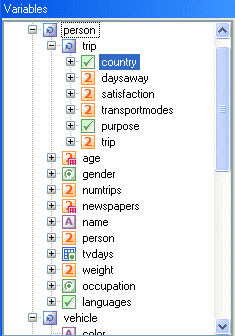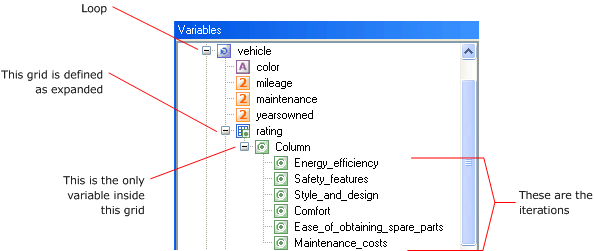
 Next
Next
This topic describes working in the Variables pane when you are using the hierarchical view of the data. Note that when you are using the flat view, although grids and loops are shown as expandable items, you cannot create a grid table, or use a variable that is inside a loop or grid in a table as described in this topic. However, you can use a slice of a grid or expanded loop in a table.
The Variables pane represents loops and grids as expandable items. Click the grid or loop to expand it. This reveals the variables that are contained within the loop or grid.

You can use the variables inside the loops and grids in your tables, in the normal way.
You can also generate your tables at different levels. For information on the significance of generating your tables at different levels, see Examples Showing Results Generated at Different Levels
You can use grids and loops that are defined as expanded to create grid tables. The person loop in the example above is an expanded loop, and the vehicle loop contains a grid called rating. When you look at the variables inside an expanded loop or a grid, you can see the iterations.

See the topic Understanding Grid Tables for more information.
The iterations are sometimes called grid or loop slices and you can use them in your tables. See the topic Tabulating Grid and Loop Slices for more information. The iterations are not shown for loops that are unbounded.
Note: Compounds and blocks are used to group questions for display or convenience only and do not define a true hierarchical structure. Therefore, you cannot use compounds and blocks to create grid tables. However, you can use the variables that are nested within a compound or block in your tables in the normal way.